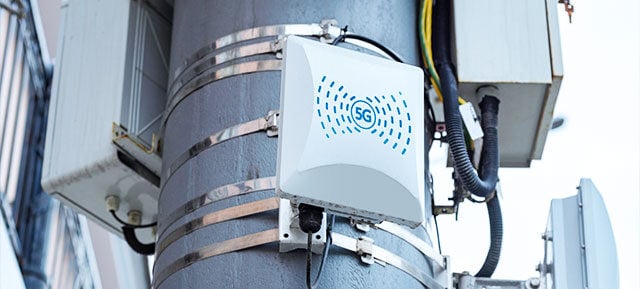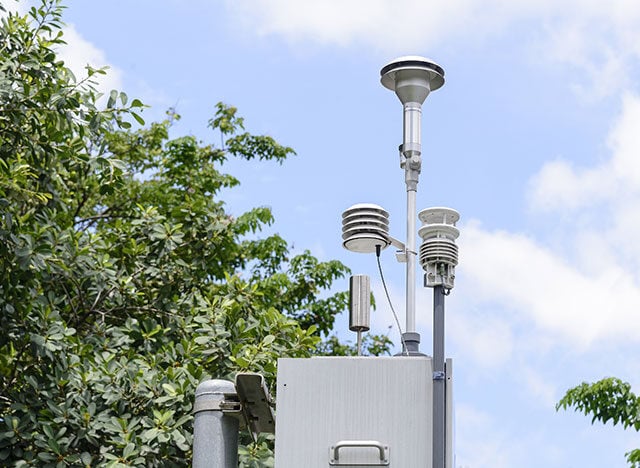.jpg?width=2560&height=720&name=5G_Standalone_3200_2-scaled%20(1).jpg)
5G Non-Standalone (NSA) vs 5G Standalone: Uses in IoT
5G Non-Stand Alone (NSA) leverages existing 4G LTE networking infrastructure. 5G Standalone represents the first major upgrade to the core network infrastructure, in order to meet differing enterprise needs.
5G Non-Standalone (NSA) vs 5G Standalone
5G Non-Standalone (NSA) and 5G Standalone describe the two types of architecture for fifth generation (5G) networks.
Here, we’ll explain what each model consists of, and what they could mean for your current and future IoT applications.
What is 5G Standalone?
With 5G standalone, an MNO creates an entirely new dedicated 5G network, standing completely separate from its 4G services and any other legacy networks.
What are the differences between 5G NSA and 5G Standalone?
The radio transmission technology for 5G is known as 5G New Radio (NR). With NSA architecture, 5G NR is used in conjunction with an existing 4G LTE core network which does place some limits on performance.
With Standalone 5G, all infrastructure including base stations, core networks and backhaul links are dedicated exclusively to 5G. It no longer relies on 4G in any way and delivers the full speed and latency benefits of 5G.

What are the key benefits of 5G Non-standalone?

Rather than having to build completely new networks, NSA provides a way for MNOs to put their existing network architecture to work to deliver 5G capabilities. It allows MNOs to make 5G services available to both consumers and businesses quicker and cheaper than would be the case if all networks had to be created from scratch.
This makes NSA a useful networking option for applications that will benefit from a boost in data speed compared to LTE, but where this doesn’t necessarily have to be delivered from a dedicated 5G network. Consumer smartphone devices are the primary driver and beneficiary of this approach, but some IoT and business applications such as security and surveillance systems will also benefit. 5G NSA also enables enhanced mobile broadband services for connecting remote enterprise or retail sites.
What are the key benefits of 5G Standalone?
NSA is an effective way of utilising 4G to benefit from increased data speed. However, certain key capabilities of 5G cannot be realised through NSA: they need the dedicated 5G core that comes with standalone architecture. 5G standalone opens the door to the following business-friendly benefits:
Latency
A shift to 5G NSA can result in some reduction in latency when compared to 4G LTE. However, for applications such as advanced robotics, remotely-controlled precision maintenance and autonomous vehicles, you often need latency levels lower than even 5G NSA can deliver. These applications have strict safety requirements which can only be fulfilled by ultra low latency and highly reliable connectivity. This is the primary objective of URLLC (Ultra Reliable, Low Latency Communications) which 5G Standalone can deliver. As it stands today, there are a range of proof of concepts (POCs) evaluating this technology and its long term suitability for these types of applications.
Massive IoT
Compared to other standards (including 5G NSA), 5G Standalone can support a much higher concentration of connected devices within a small area. This allows you to connect very large volumes of sensors to help with monitoring, visualisation, and automation of smart city, manufacturing and other industry sectors.
Network slicing
Standalone 5G is necessary to fully enable “network slicing”, whereby MNOs ‘slice’ part of their physical networks into separate subnets for customers. Rather than getting a one-size-fits-all connectivity option, network slicing gives you the opportunity to access a 5G service that’s configured to your very specific demands in areas such as network latency, connectivity prioritisation and expanded device support.

The future of 5G NSA and 5G Standalone

So far, 5G NSA has provided MNOs with an effective way of making some of the main benefits of 5G – particularly high data speed – available to smartphone users and for some IoT applications. It’s a useful evolutionary stepping stone from 4G to 5G.
At the same time however, we can expect more standalone networks to appear over the next few years. Ultimately, we would expect the NSA model to be no longer needed as MNOs transition to a full 5G architecture.
